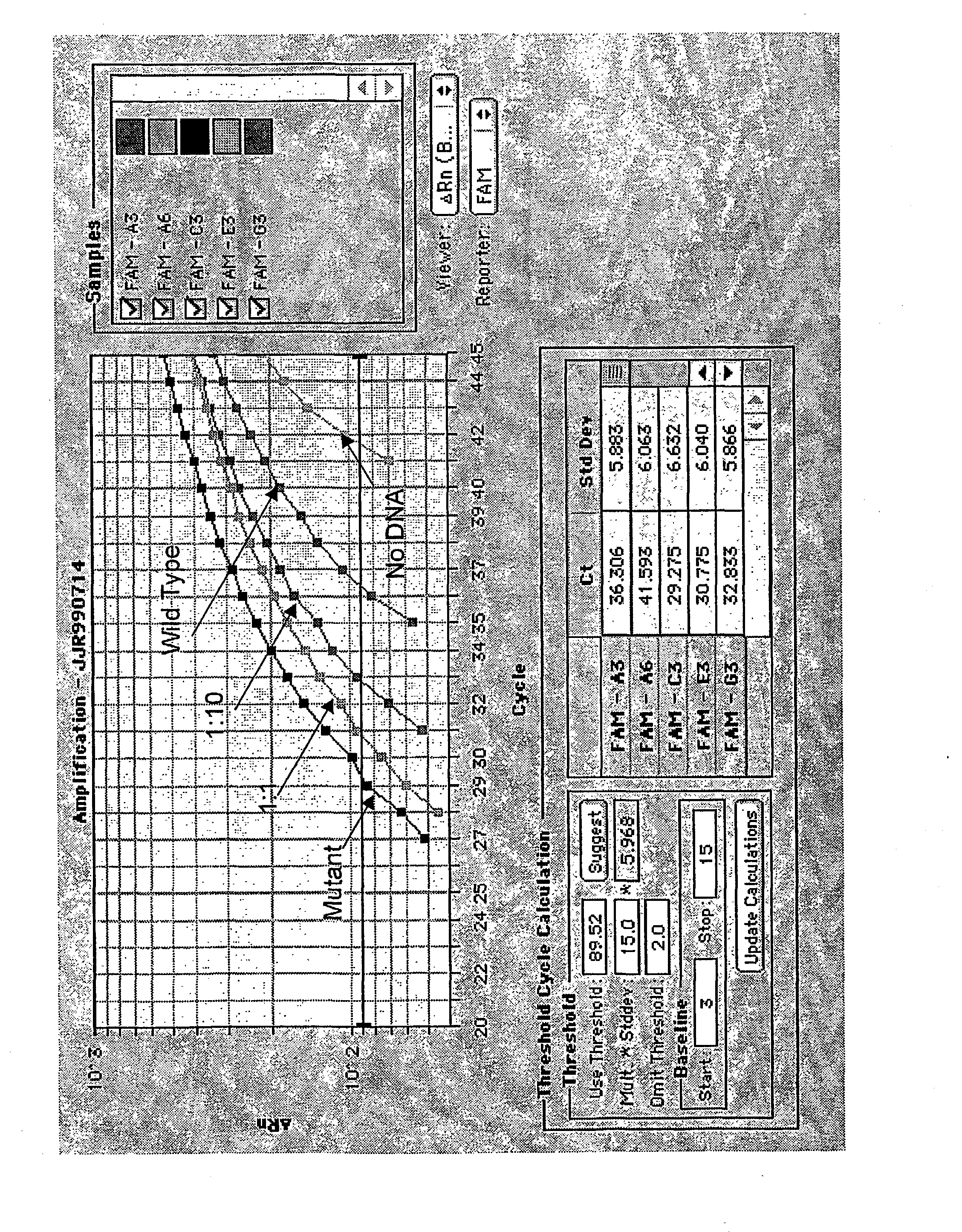Method for concurrent amplification and real time detection of polymorphic nucleic acid sequences
a polymorphic nucleic acid and real-time detection technology, applied in the field of concurrent amplification and real-time detection of polymorphic nucleic acid sequences, can solve the problems of inability to detect false negatives, inability to amplification, and inability to amplification, so as to increase the sensitivity and reliability of the assay
- Summary
- Abstract
- Description
- Claims
- Application Information
AI Technical Summary
Benefits of technology
Problems solved by technology
Method used
Image
Examples
Embodiment Construction
[0091] Assay for Detecting Sequence Polymorphisms in the K-ras Gene
[0092] Methods
[0093] PCR Primers. The 5' PCR primer 5KIT (5'-TATAAACTTGTGGTAGTTGGACCT-3'-) contains sequence which is complementary to the human K-ras gene (underlined). A single mismatched base located near the 3'end of 5KIT results in the induction of a recognition / cleavage site for the thermostable RE BstN I in PCR amplicons provided the first two bases in codon 12 of the K-ras gene are wild type (GG). The 3' primer 3K45Dz2 (5'-CCACTCTCGTTGTAGCTAGCCTATTAGCTGTATCGTCAAGCCACTCTTGC-3') is a DzyNA-PCR primer which contains (a) a 5' region containing the catalytically inactive antisense sequence complementary to an active 10:23 deoxyribozyme (plain bold text indicates the complement of the arms that hybridise to the reporter substrate, italic bold text indicates the complement of the 10-23 catalytic domain) and (b) a 3' region which is complementary to the human K-ras gene (underlined). Primers were synthesized by Macro...
PUM
| Property | Measurement | Unit |
|---|---|---|
| temperatures | aaaaa | aaaaa |
| threshold level | aaaaa | aaaaa |
| TM | aaaaa | aaaaa |
Abstract
Description
Claims
Application Information
 Login to View More
Login to View More - R&D
- Intellectual Property
- Life Sciences
- Materials
- Tech Scout
- Unparalleled Data Quality
- Higher Quality Content
- 60% Fewer Hallucinations
Browse by: Latest US Patents, China's latest patents, Technical Efficacy Thesaurus, Application Domain, Technology Topic, Popular Technical Reports.
© 2025 PatSnap. All rights reserved.Legal|Privacy policy|Modern Slavery Act Transparency Statement|Sitemap|About US| Contact US: help@patsnap.com

